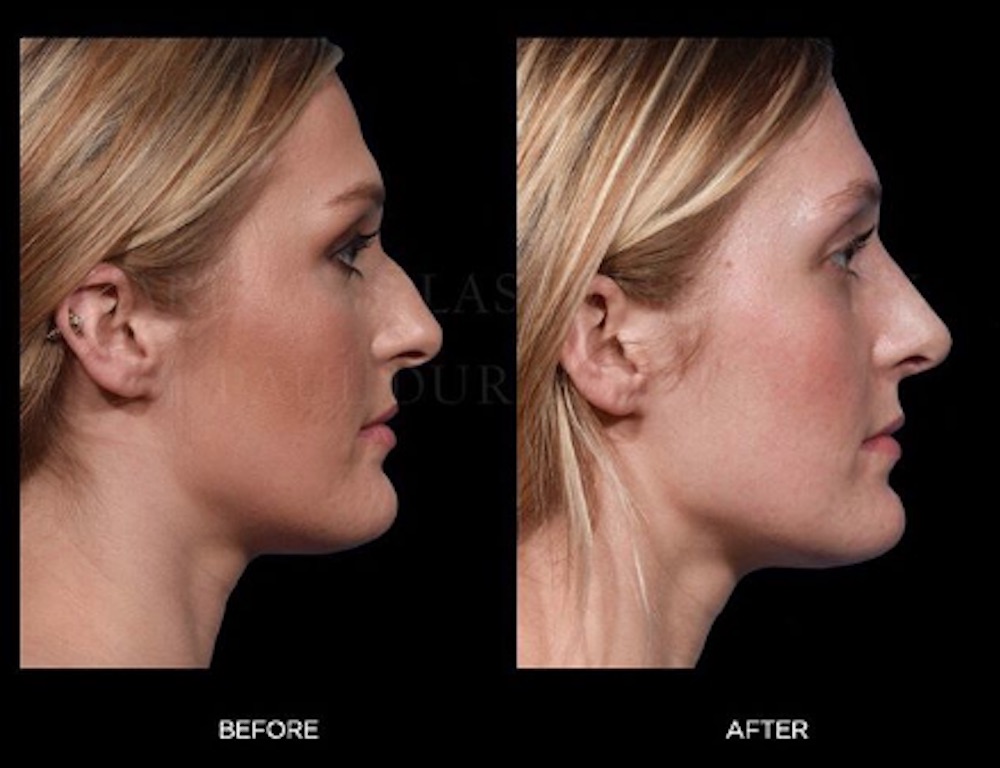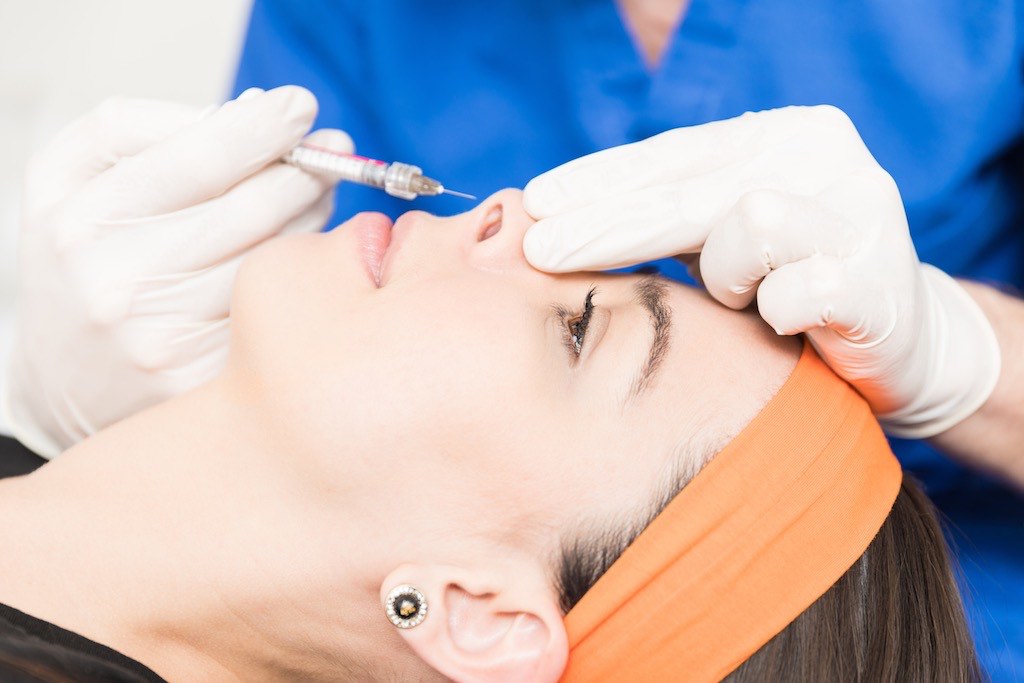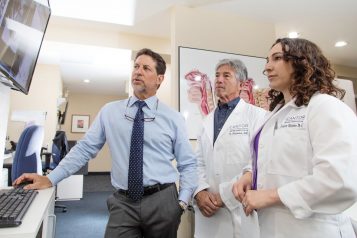A Rhinoplasty, also known as a nose job, is one of the most common plastic surgeries to have. Now, with the numerous advancements in the world of beauty, more less invasive procedures exist. Haute Beauty chats with Plastic Surgeon Paul D. Durand, MD who performs surgical rhinoplasties (and other surgical procedures) and PA Reana Myers, who performs liquid rhinoplasties (and other non-invasive procedures) at Careaga Plastic Surgery about the key differences in surgical rhinoplasties and liquid rhinoplasties.
 Photo Credit: instagram.com/careagaplasticsurgery/
Photo Credit: instagram.com/careagaplasticsurgery/
Surgical Rhinoplasty
- In most cases, a surgical rhinoplasty is indicated to provide the best long-term
- The most important part of a rhinoplasty occurs during the initial consultation where both the patient and surgeon sit down and go over each specific concern.
- Facial characteristics vary tremendously between individuals and should be considered when coming up with a surgical plan.
- Rhinoplasty has long been considered the most difficult procedure in cosmetic surgery, as it is a surgery of millimeters and one that can have a profound impact in a person’s life.
- Fixing a botched rhinoplasty is a much more difficult process than getting it right the first time. The best rhinoplasty is one that will not have to be redone!
- In most cases, this procedure takes about 1.5 to 3 hours, but it varies depending on the type of nose and if this is a first-time or a revision rhinoplasty.
- Recovery Time: All splints and stitches are removed seven days after surgery. Even though patients will still be swollen, most people won’t know the patient had the surgery after the first week. Swelling continues to improve significantly during the first few months
- Patients can be turned down from the surgery for several reasons, sometimes due to health reasons and other times due to unrealistic expectations. According to Dr. Durand, he would never perform a surgery on someone if he doesn’t think he can help them.
- At times, patients go in for fillers, which offer a temporary solution to a specific concern, and they come back at a later time for a surgical rhinoplasty.
- During the first week after surgery, patients should keep their splint dry and in place. This is important to ensure good healing. It is also recommended for patients to avoid blowing their nose, for the first couple weeks after surgery.
- When performed by a qualified surgeon and anesthesiologist, rhinoplasty is a very safe procedure.
- Surgical rhinoplasty offers the possibility of addressing not just aesthetics but also functional concerns. Many patients come in with purely aesthetic concerns and it isn’t until after surgery that they realize they can breathe well for the first time in their lives!
 Photo Credit: shutterstock
Photo Credit: shutterstock
Liquid Rhinoplasty
- Lately everyone has taken a special interest in the nonsurgical nose job also known as the liquid rhinoplasty.
- The procedure entails the injection of hyaluronic acid (HA) filter into the nose to temporarily correct its shape. The perfect candidate will be someone wishing to make the nose straighter or to modify the tip.
- In this procedure, hyaluronic acid fillers are used to camouflage asymmetries and minor imperfections. This temporary solution relies on soft-tissue augmentation so it should only be used in patients with small noses – a rule commonly ignored by overzealous practitioners!
- The nonsurgical rhinoplasty doesn’t make the nose smaller, in fact by using fillers they add volume, so that they can make a bump less visible or refine the noses shape.
- This procedure has no downtime.
- The patient might experience mild discomfort, minimal to no bruising, and mild swelling.
- Unlike a surgical rhinoplasty the results are temporary, lasting anywhere from 10 to 12 months.
- The nonsurgical rhinoplasty should be considered a short-term solution for minor corrections. It is not used, and it won’t treat any functional issues.
If you are interested in a rhinoplasty and want to learn more about which treatment is best for you, please call Careaga Plastic Surgery to schedule a consultation with our professionals at 305.910.2847, or visit or visit careagaplasticsurgery.com.
More from the professionals at Careaga Plastic Surgery:
Dr. Paul D. Durand:
Since it was first described in India 6th century B.C., rhinoplasty or nasal shaping has come a long way. The days of cookie cutter noses of the 60s and 70s are mostly gone – as they should be! Standards of beauty have changed, and with it, one’s individuality in facial appearance. In the age of the Instagram selfie, people have grown not just aware of their own imperfections but also realized that no two noses are the same. A nose that looks good on one’s face might not seem fitting on another
In select cases, a non-surgical (or “liquid”) rhinoplasty can be a good option. In this procedure, hyaluronic acid fillers are used to camouflage asymmetries and minor imperfections. This temporary solution relies on soft-tissue augmentation so it should only be used in patients with small noses – a rule commonly ignored by overzealous practitioners!
In most cases, a surgical rhinoplasty is what is indicated and provides the best long-term result. It can serve to address both cosmetic and functional concerns, while changing one’s life in the process. The most important part of a rhinoplasty occurs during the initial consultation where both the patient and surgeon sit down and go over each specific concern. Careful nasal analysis occurs at this time to ensure that what the patient wants is perfectly aligned with what the surgeon can accomplish. Facial characteristics vary tremendously between individuals and should be considered when coming up with a surgical plan.
Rhinoplasty has long been considered the most difficult procedure in cosmetic surgery; it is a surgery of millimeters and one that can have a profound impact in a person’s life. Depending on what the aesthetic and functional goal is, these structures need to be carefully altered. It is extremely important that only surgeons who have specifically trained in rhinoplasty, perform this procedure. The nose is made up of a variety of intricate structures, each with a specific purpose. Fixing a botched rhinoplasty is a much more difficult process than getting it right the first time. The best rhinoplasty is one that will not have to be redone!
PA Reana Myers:
Lately everyone has taken a special interest in the nonsurgical nose job also known as the liquid rhinoplasty. What this procedure entails is the injection of hyaluronic acid (HA) filter into the nose to temporarily correct its shape. The perfect candidate will be someone wishing to make the nose straighter or to modify the tip. The nonsurgical rhinoplasty doesn’t make the nose smaller, in fact by using fillers we are adding volume, so that we can make a bump less visible or refine the noses shape. This procedure has no downtime. The patient might experience mild discomfort, minimal to no bruising, and mild swelling. Unlike a surgical rhinoplasty the results are temporary, lasting anywhere from 10 to 12 months. The nonsurgical rhinoplasty should be considered a short-term solution for minor corrections. It is not used, and it won’t treat any functional issues.
For more information, visit Dr. Brian A. Levine's social media:

























